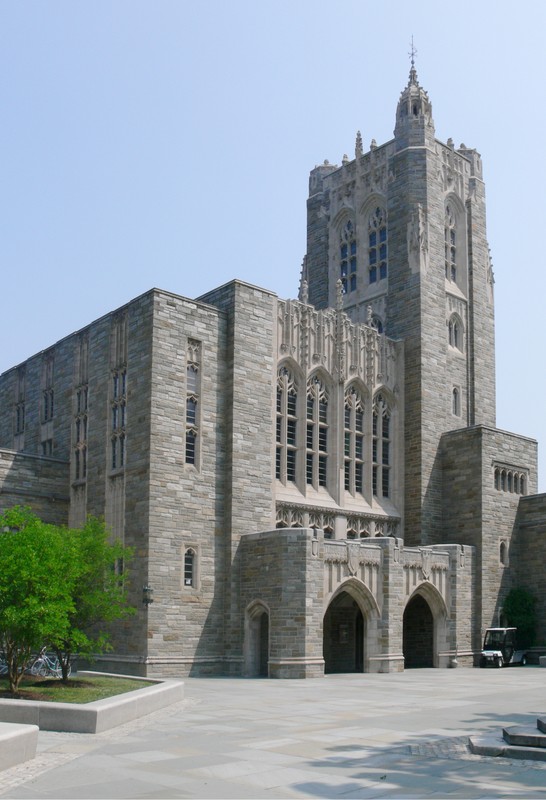Harvey S. Firestone Memorial Library at Princeton University
Introduction
Text-to-speech Audio
Images
2007 Photo of the Harvey S. Firestone Memorial Library of Princeton University

Backstory and Context
Text-to-speech Audio
The Harvey S. Firestone Memorial Library (named in honor of Firestone Rubber and Tire Company founder Harvey S. Firestone) at Princeton University is one of the largest open-stack libraries in the world with more than 70 miles of bookshelves. The library opened in 1948 as the first extensive American university library constructed after World War II and now stands as one of the last Gothic Revival buildings at Princeton. The school transferred 1.5 million volumes from its old library locations to Firestone when it opened, which speaks to the long history of Princeton University's library program that can be traced back to the days before the Revolutionary War.
College Presidents Jonathan Dickinson and Aaron Burr, Sr donated their personal book collections to the University (then known as the College of New Jersey) in the 1740s. In 1750, Governor Belcher donated 474 books to the school, which made the school's library collection the sixth-largest in the colonies. The library's first home was a second-floor room in Nassau Hall, which it shared for a time with the Continental Congress.
The library survived the Revolutionary War, but not a fire in 1802. Consequently, the school needed the help of donors to rebuild the collection, continuing the tradition that had started in the 1740s. It wasn't until the 1860s that the university deemed the library necessary for dedicated attention and funding. President James McCosh came to Princeton in 1868 and, in his view, felt the library was inadequately supplied with books, and that it was insufficient for the library to be open for only one hour, once a week.
In 1873, Princeton hired its first full-time librarian, Frederick Vinton, who had previously worked at the Library of Congress. Two years later, in 1875, Princeton finished construction on Chancellor Green Library, the school's first dedicated library building. The university's growing collection of materials required the addition of the Pyne Library in 1897. By the 1930s, the collection had grown to more than one million volumes rendering the Chancellor Green and Pyne library buildings insufficient. Thus, in 1948, the Firestone Memorial Library opened as the university's new primary library building; The university transferred nearly 1.5 million to the new Firestone Library from Pyne and Chancellor Green Halls.
The Firestone Library possesses more books per enrolled student than that of any other university in the United States. Most of the books are stored in three underground levels, which makes the library appear much smaller from the outside than one might expect; only four, relatively small above-ground floors are visible.
The growth of Princeton's collection has continued to push the university to expand its physical library spaces, including at Firestone. In 1971, the need for additional space for both books and readers led to an expansion of the two lower floors, and in 1988 more space was added. Another expansive renovation occurred during the twenty-first century, partly to help modernize it as the world grew increasingly electronic.
Despite the expansions, Princeton's collection outgrew Firestone Library's capacity. Today, the Princeton collections total more than 7 million printed works, 83,000 serial titles, 6.7 million microforms, 49,000 linear feet of manuscripts (2011), and access to innumerable electronic resources. Consequently, numerous volumes are stored at approximately one dozen alternative locations throughout the campus, but Firestone remains Princeton University's main library.
Sources
Gilbert, Ellen. "Firestone Library's Ten-Year-Long Renovation." Princeton Magazine. princetonmagazine.com.
Linder, Elizabeth. "Rare books curator reflects on libraries' past and future." The Daily Princetonian. dailyprincetonian.com. February, 2014. https://www.dailyprincetonian.com/
Princeton University Library. "Library History." Princeton University. princeton.edu. Accessed May 18, 2020. https://library.princeton.edu/about/history
By Photo: Andreas Praefcke - Self-photographed, CC BY 3.0, https://commons.wikimedia.org/w/index.php?curid=2238823
